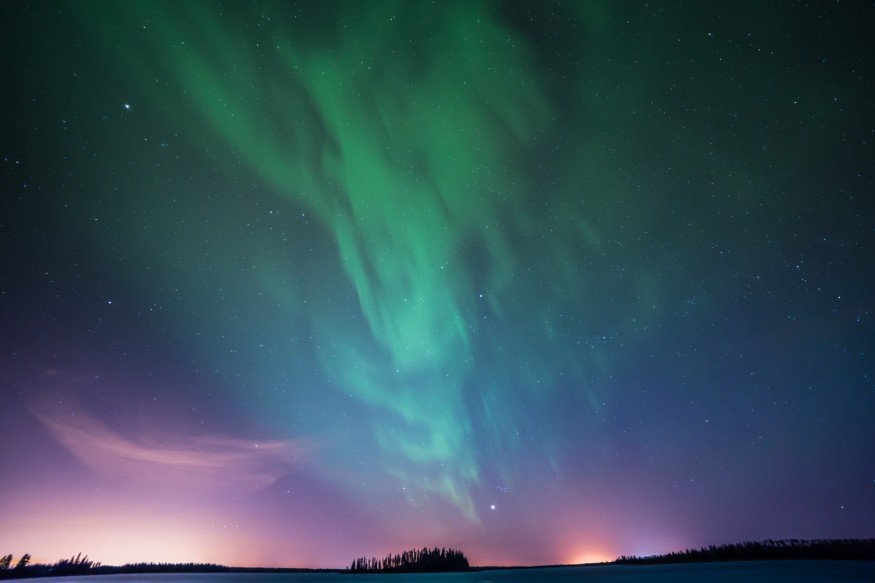A photographer captured images of rare vibrant green streaks of light in the starry sky above a U.S. mountain range, resembling auroras but representing an even rarer phenomenon.
Solar activity is increasing, and the expected solar maximum in 2025 may occur earlier due to an unusual burst of sunspots this year. There are indications that solar maximum could potentially be reached by the end of 2023, instead of the previously predicted timeframe.

Stunning Aurora-Like Light Display Captured in the US
Aaron Watson captured the breathtaking sight near the West Elk Mountains in Colorado. Watson told Live Science in an email that the emerald lights appeared around midnight on June 21, lasting for about 2 hours, shifting slowly across the sky. More so, Spaceweather.com reports that similar, though less intense, lights were spotted in other parts of Colorado.
Initially, Watson thought the lights might be noctilucent clouds, but the vibrant colors made this unlikely. He speculated that they could be a slow-moving auroral display or related phenomena, like STEVE or a stable auroral arc triggered by a solar storm.
STEVE, the acronym for strong thermal emission velocity enhancement, is a rare phenomenon discovered in 2016 that describes a white or purple or green long, thick ribbon of light that looks similar to an aurora but is not an aurora.
However, no solar storm occurred during that time. Instead, the lights were attributed to "airglow," a phenomenon in Earth's upper atmosphere caused by less-intense solar radiation. While airglow is rarely visible from the ground, it could become more frequent as solar activity increases in the coming months and years.
Solar Maximum May Come Earlier Than Predicted
The Sun is becoming more active, following its usual 11-year cycle of increasing and decreasing activity. However, what is surprising is that the solar maximum, the period of peak activity, is expected to arrive sooner than previously predicted.
Experts had forecasted that the solar maximum would occur in 2025, but recent behavior from the sun suggests it will happen by the end of this year. Solar physicist Alex James from the University College London previously told Live Science that the Sun's peak will occur earlier and with greater intensity than anticipated.
During the solar maximum, the Sun's magnetic field weakens significantly, posing potential risks to Earth. Normally, the solar magnetic field acts as a protective shield, reducing the threat of harmful events such as solar flares and coronal mass ejections (CMEs).
Scientists anticipate an increase in sunspots, solar flares, and coronal mass ejections (CMEs) as the sun becomes more active, leading to an approaching solar maximum. Monitoring the number and frequency of sunspots helps track the solar cycle and its progression toward maximum activity.
According to Insider, the Sun's current cycle was initially predicted to reach its peak in 2025 with around 115 sunspots, but sunspots have exceeded these expectations. In January, over 140 sunspots were recorded, surpassing the forecasted maximum of 92.
Solar flares have also become more frequent and powerful each year, leading to significant geomagnetic storms, like a "stealth" CME in March that resulted in a powerful storm and the aurora borealis visible as far south as Arizona.
Various unusual solar phenomena, including vortexes, plasma "waterfalls," twisting prominences, and large "holes" in the sun's outer atmosphere, also suggest an early solar maximum is on the horizon.
RELATED ARTICLE: Sun Could Increase in Solar Activity and Eject More Flares; Sunspot Observed to be Hyperactive
Check out more news and information on Space in Science Times.
© 2026 ScienceTimes.com All rights reserved. Do not reproduce without permission. The window to the world of Science Times.











